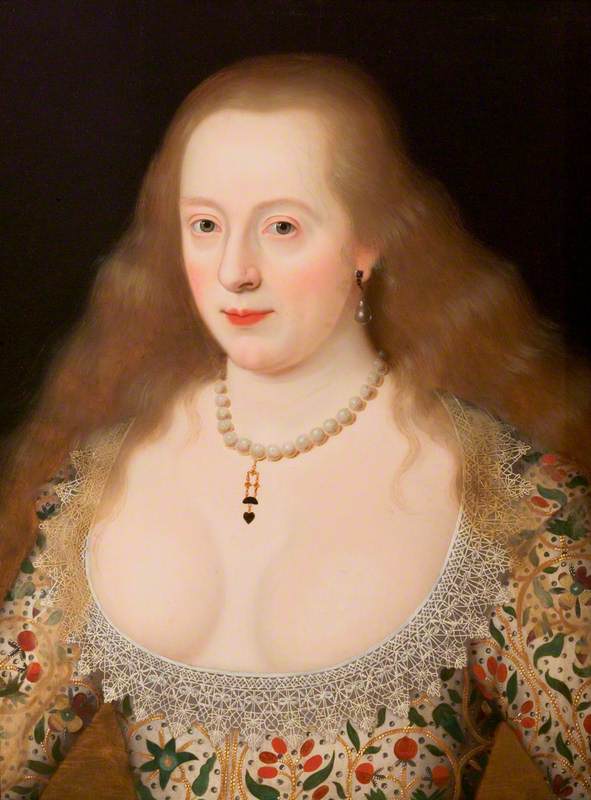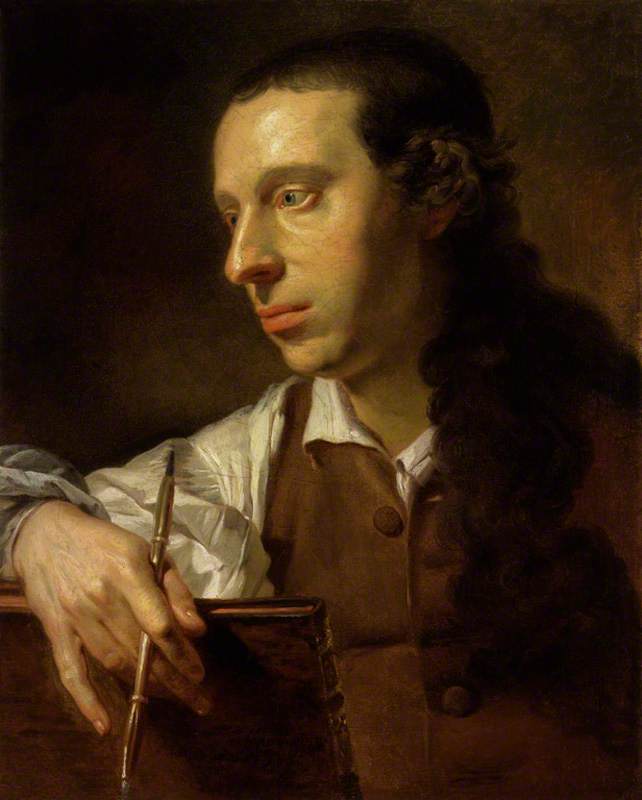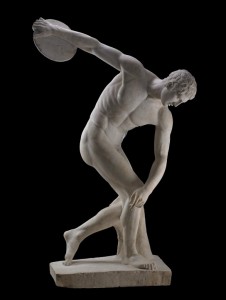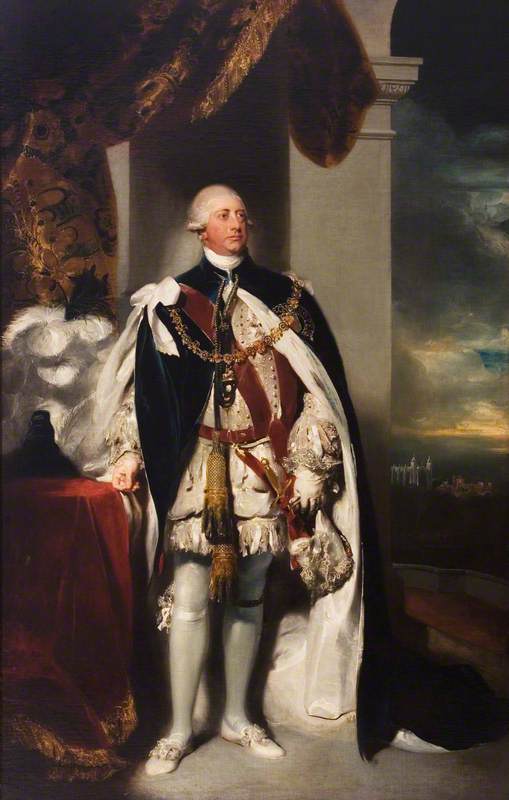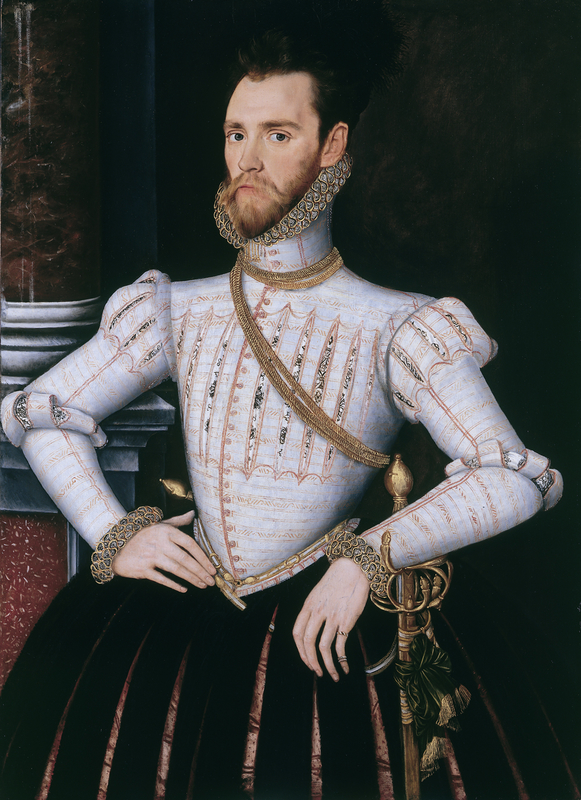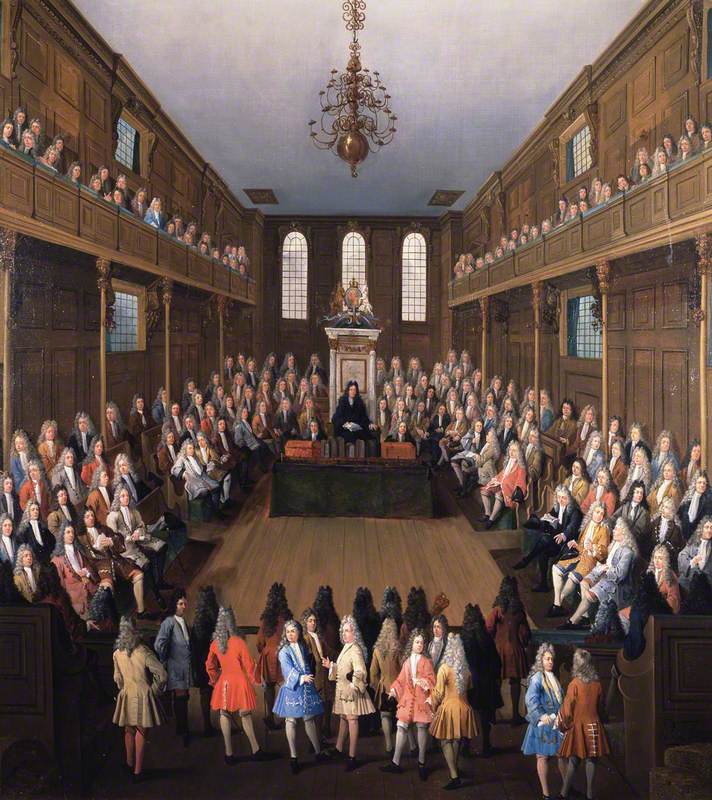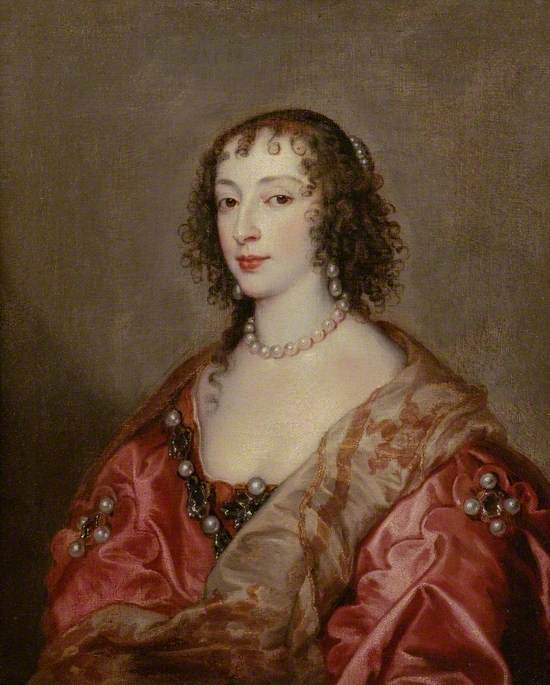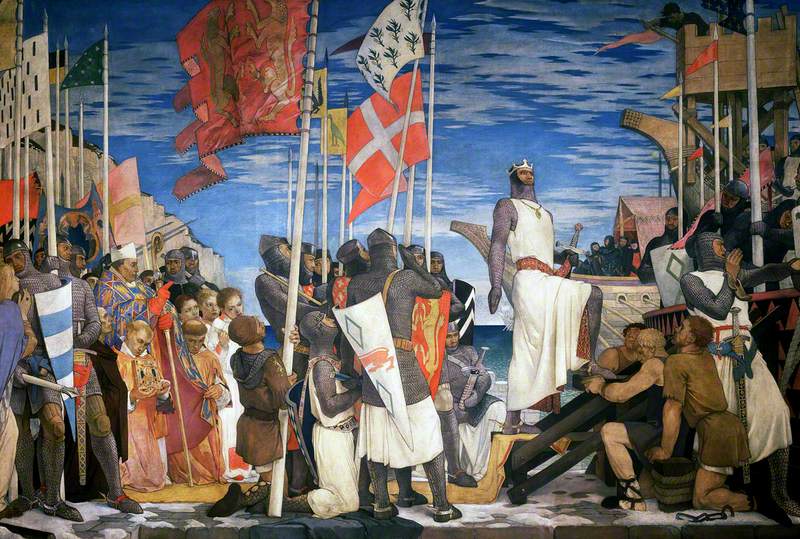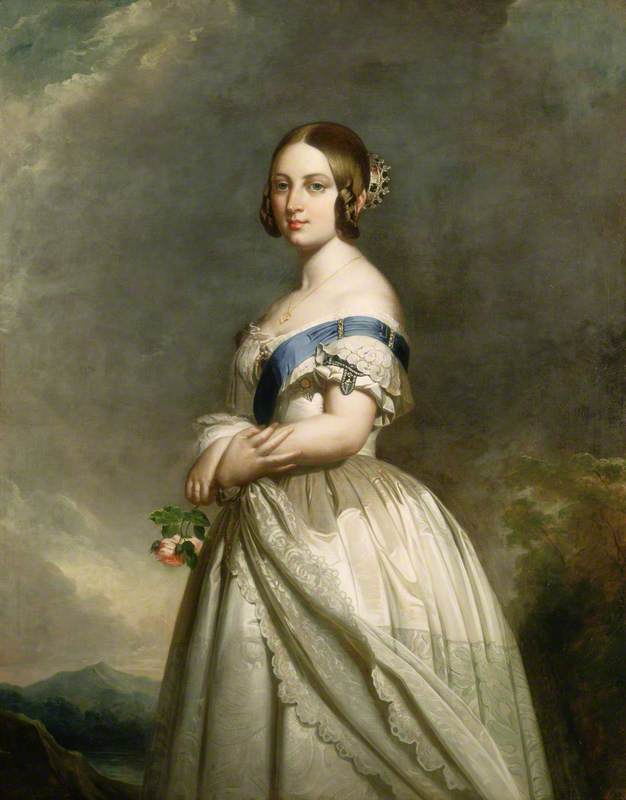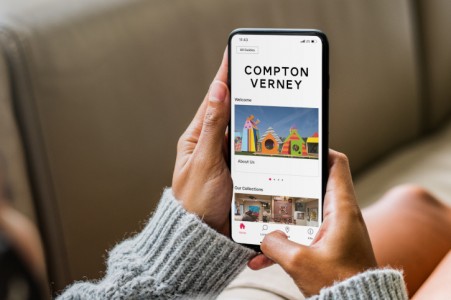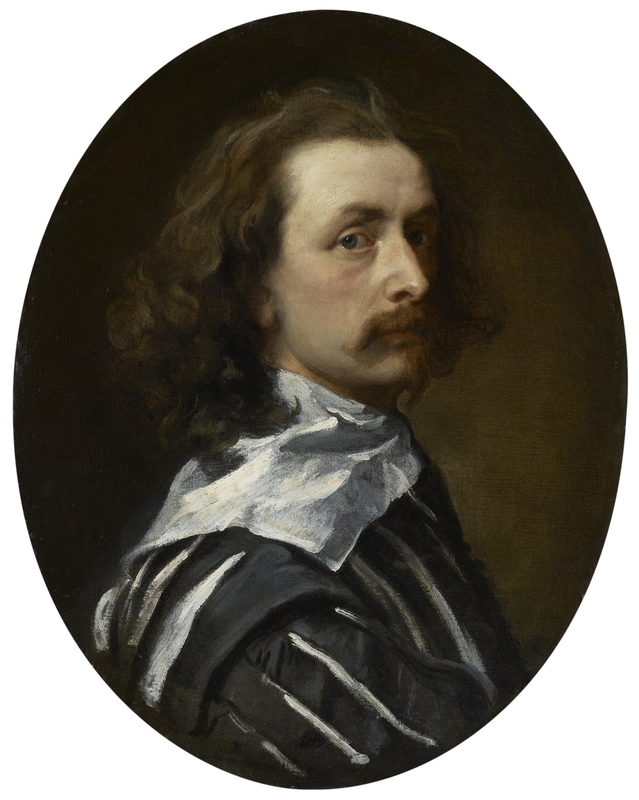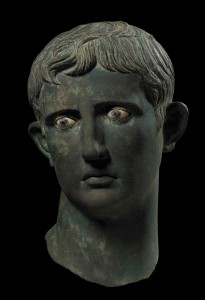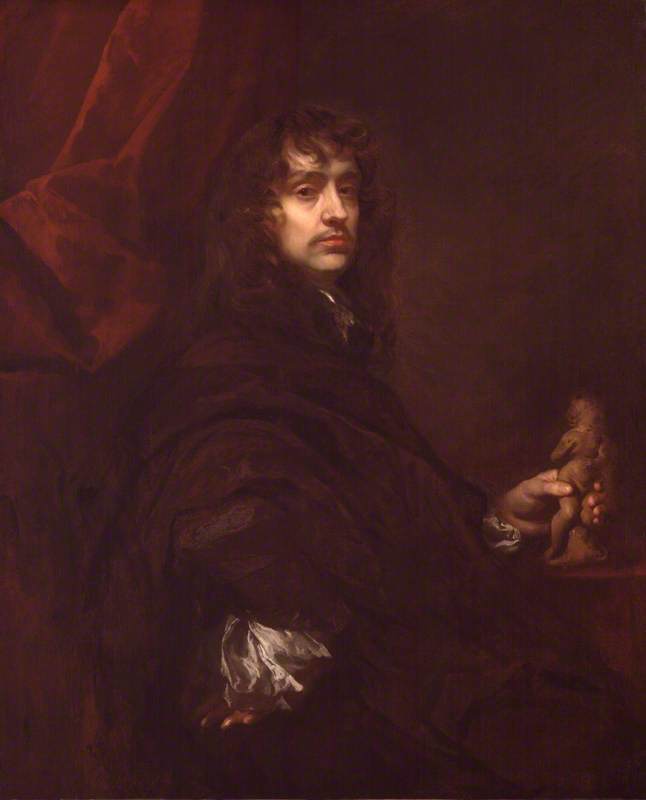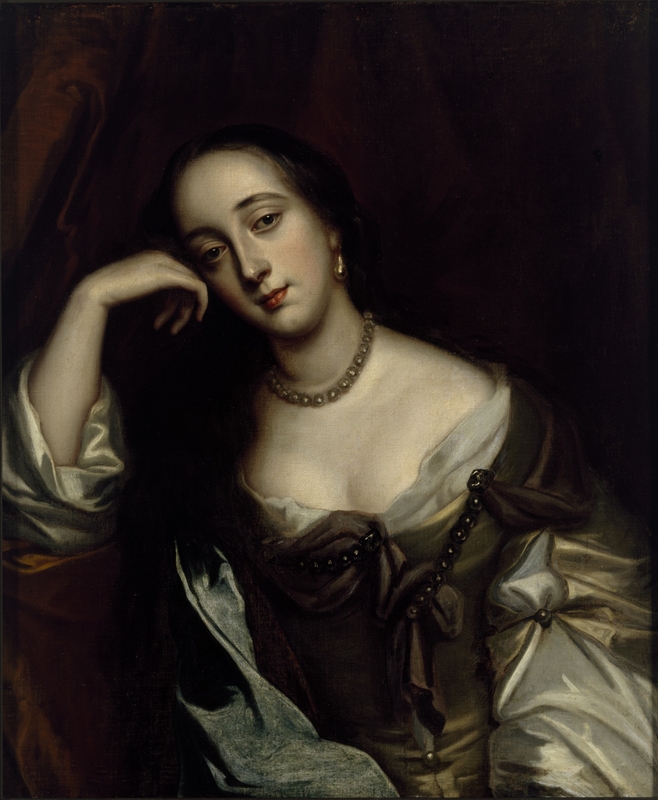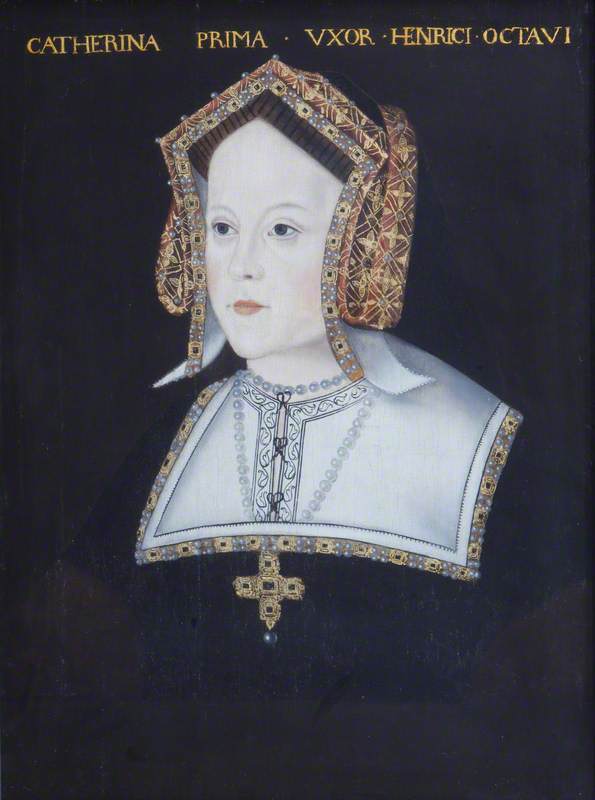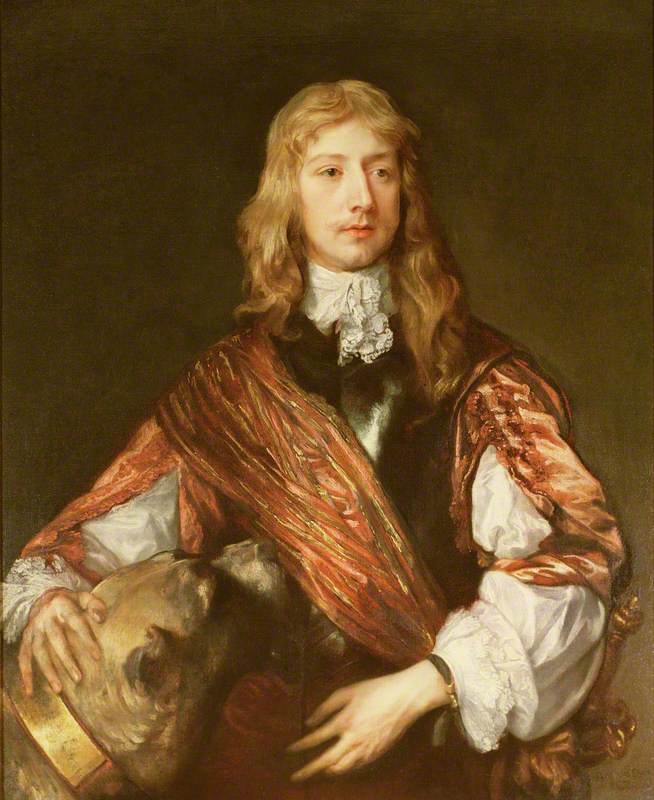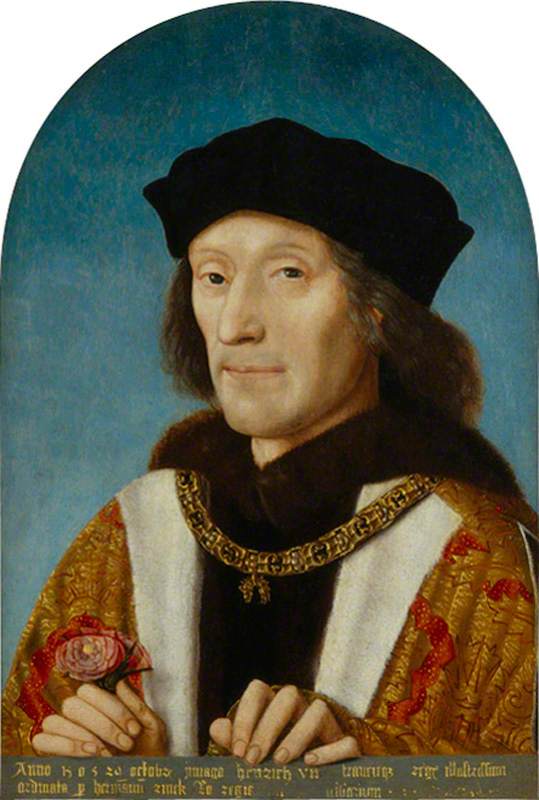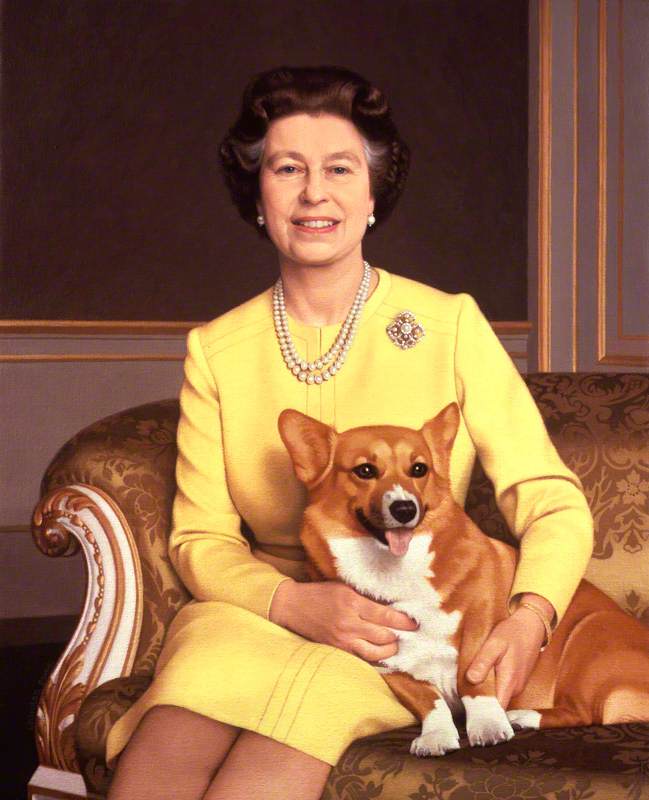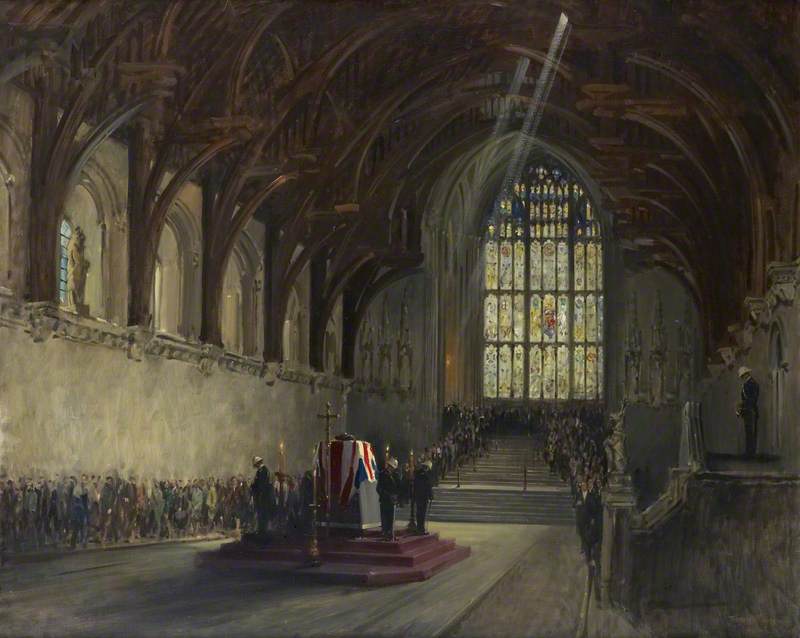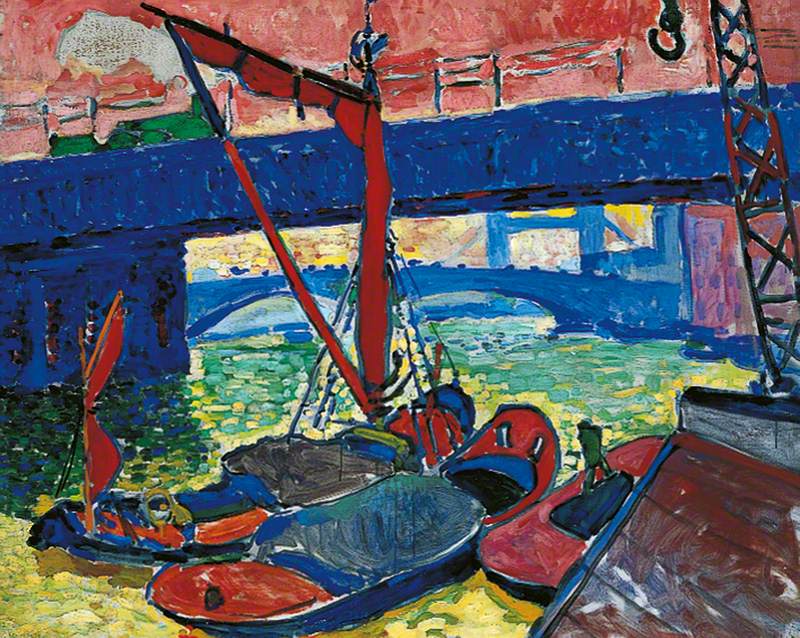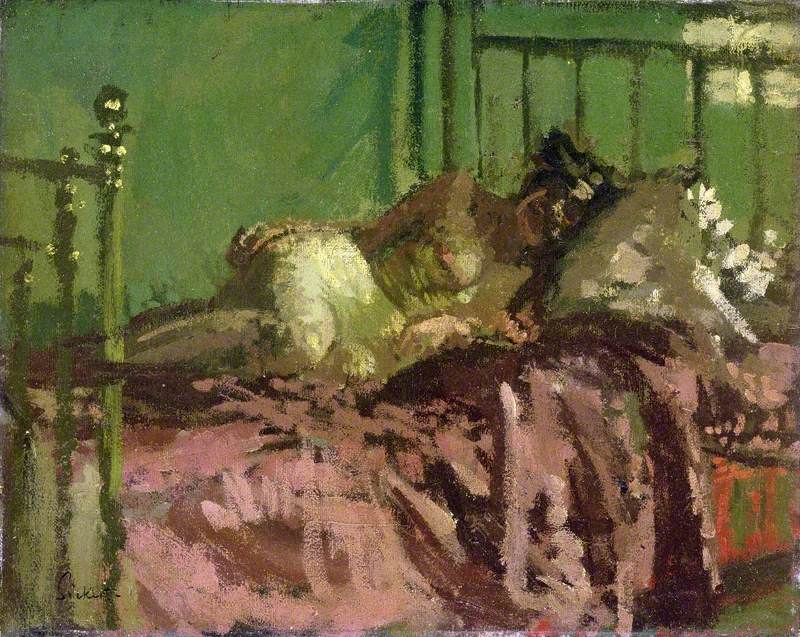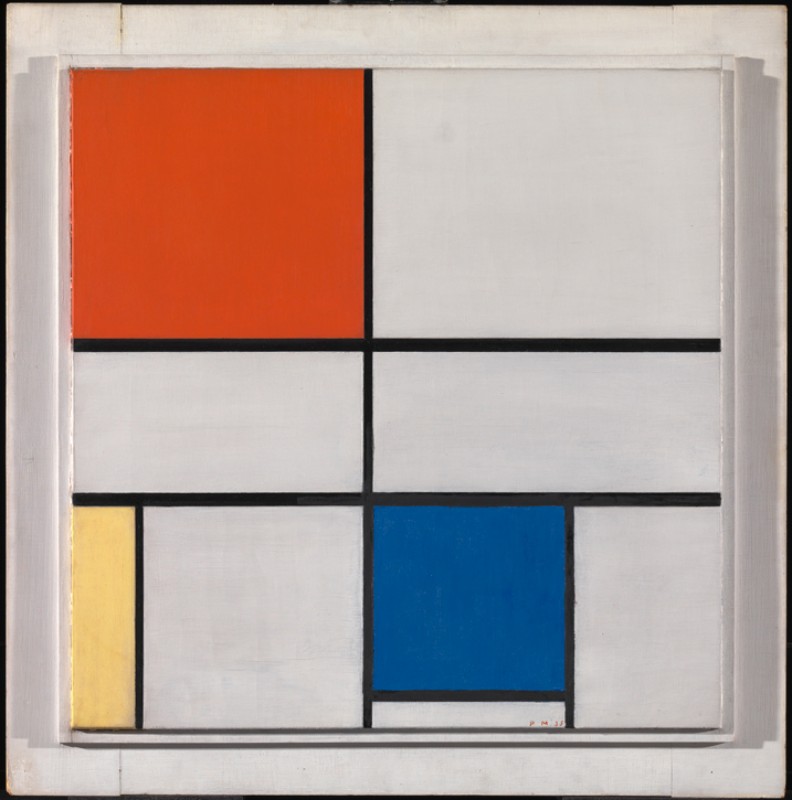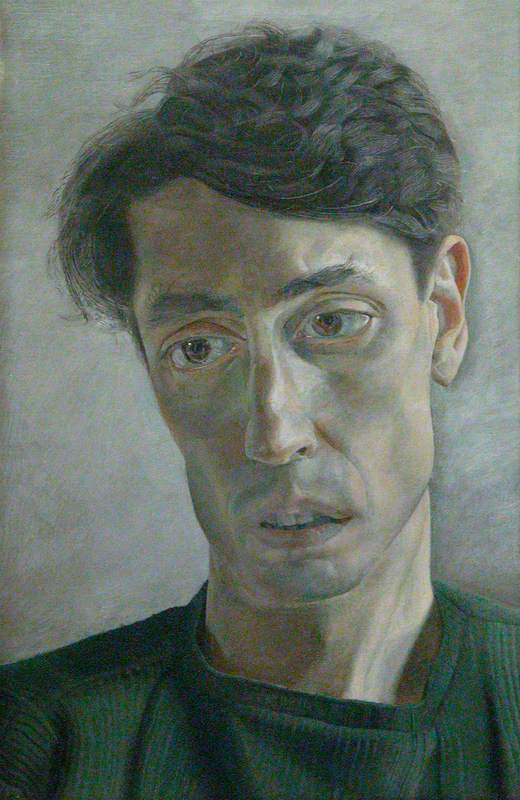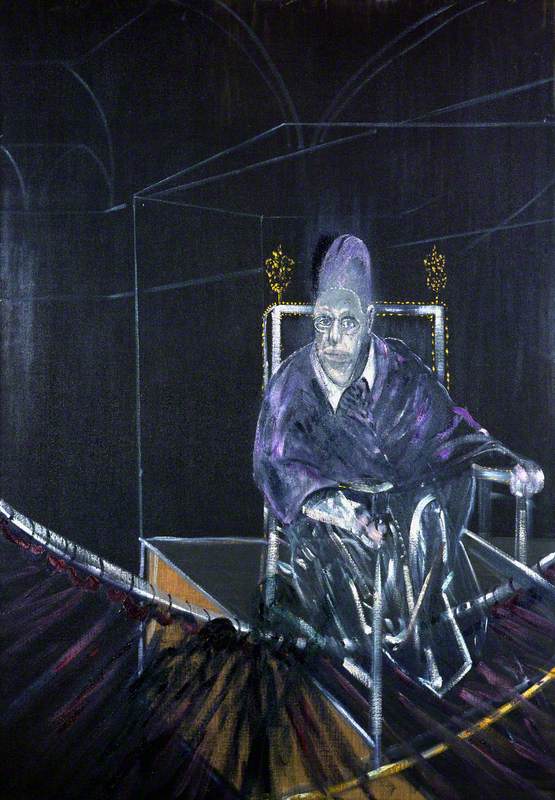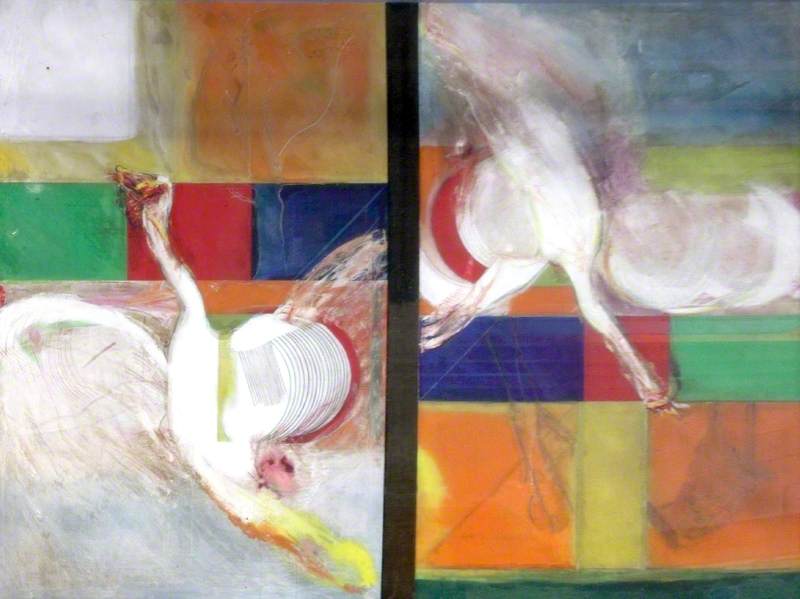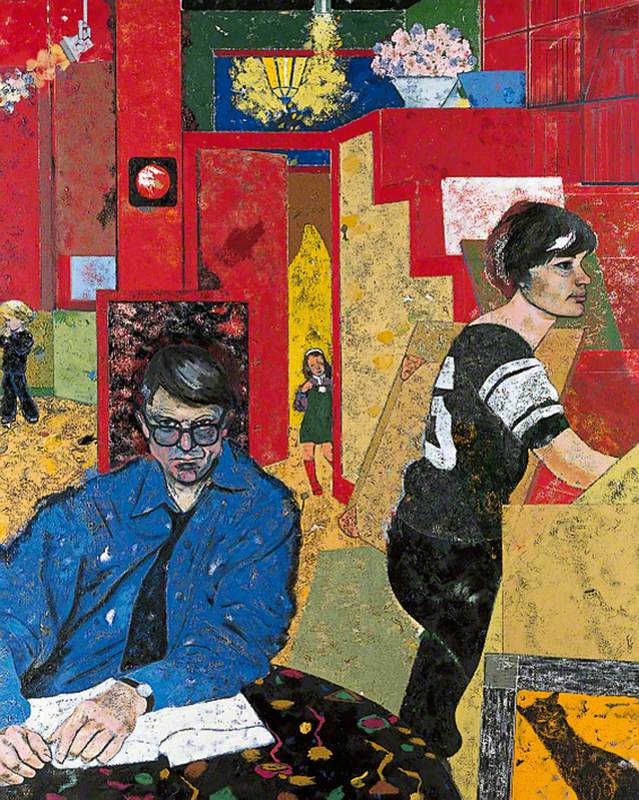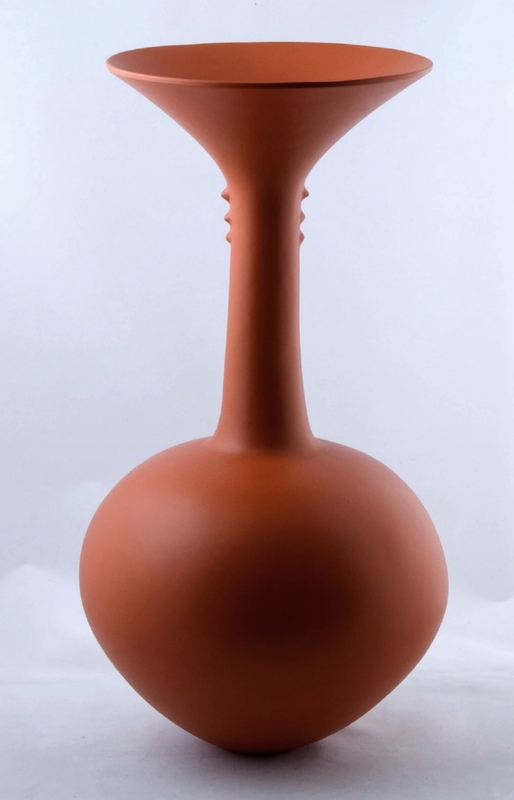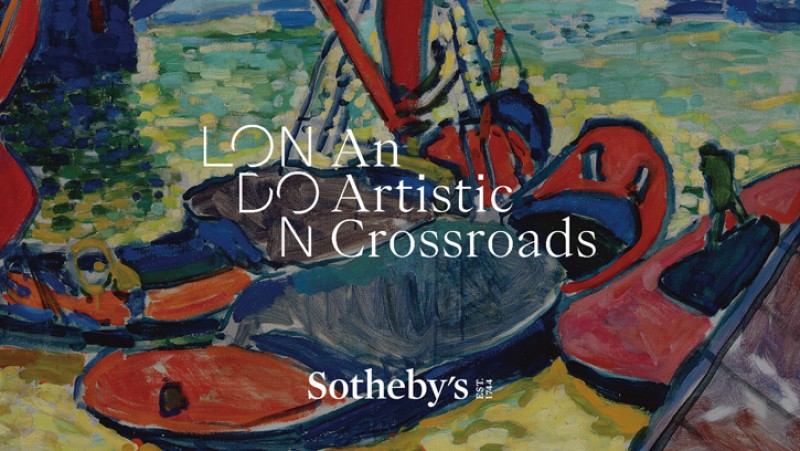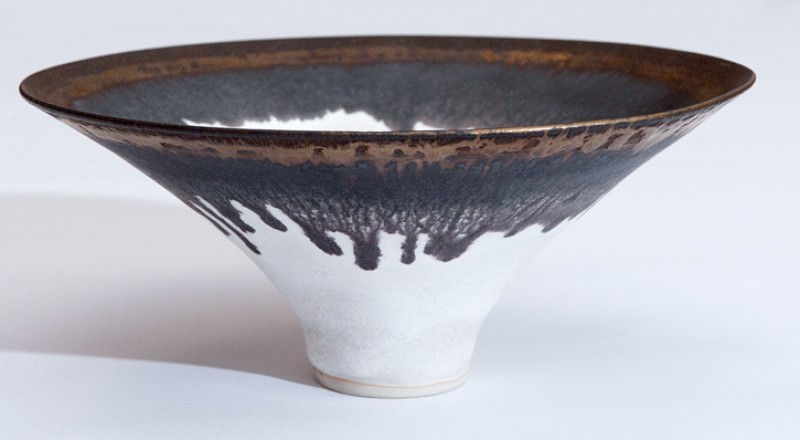Twelve UK museums come together with Art UK and Sotheby's to stage a month-long exhibition celebrating the UK's central role in the creative lives of leading international artists.
The free exhibition 'London: An Artistic Crossroads' is on display at Sotheby's New Bond Street Galleries from 25th May to 5th July 2024.
Johann Zoffany was born in Germany, studied in Rome and moved to London in 1760 when he was in his late 20s. He was following the money, having witnessed at first hand the tremendous purchasing power of the many milords who flocked to Italy in the age of the Grand Tour, bought classical antiquities and Old Master paintings by the cartload, then shipped them back home.
It was the patronage of such men that Zoffany sought and won, inventing in the process a new kind of ingeniously composed group portrait, in which aristocratic collectors and their beloved classical statues are depicted with such uncanny evenness of attention that the sculptures seem every bit as alive as their flesh-and-blood admirers.
Charles Townley and Friends in His Library at Park Street, Westminster
1781–1790 & 1798
Johann Zoffany (1733–1810) 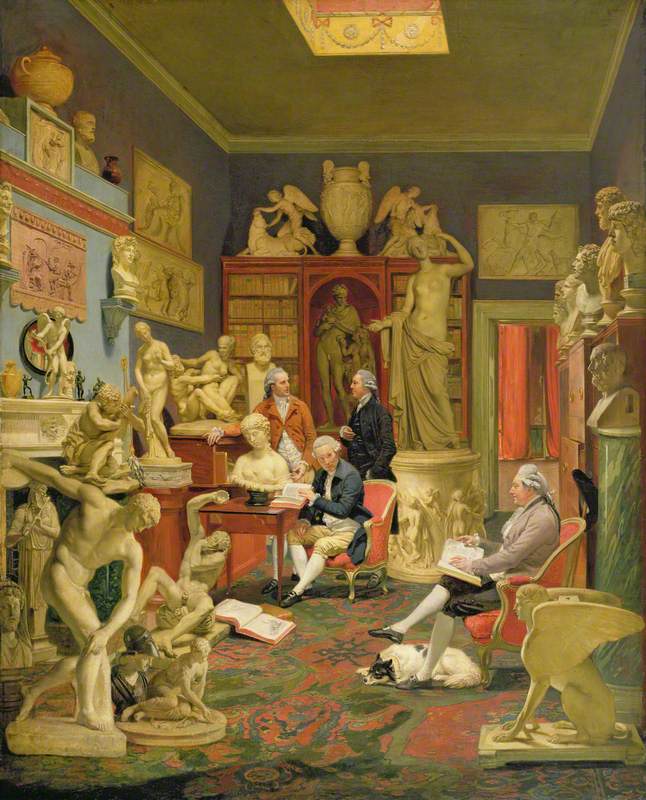
This picture of the connoisseur-collector Charles Townley and friends, surrounded by his Greek and Roman marbles in a London townhouse purpose-built to display them, is a perfectly uncanny example of the genre. Its effect has been brilliantly described by the French art historian Jean Clay: 'The piling up of masterpieces accompanied by a cluster of petrified art lovers produces a kind of cold frenzy: a chaos of forms.'
Zoffany never mastered the English language, speaking in a thick German accent until the end of his long life, but he remained fiercely loyal to the country where he would make his name. When quizzed about his nationality by the Holy Roman Emperor, Joseph II, he replied that he had been born in Ratisbon, eastern Bavaria, 'but I am an Englishman, because in that country I found protection and encouragement.'
At the time when he painted this picture, in the early 1780s, he may have been feeling slightly discouraged. A few years earlier he had scandalised his principal patrons, King George III and Queen Charlotte, by including a number of young aristocrats rumoured to be 'finger twirlers', or homosexuals, in his masterpiece The Tribuna of the Uffizi: he would receive no more royal commissions.
The Tribuna of the Uffizi
1772–1777, oil on canvas by Johann Zoffany (1733–1810) 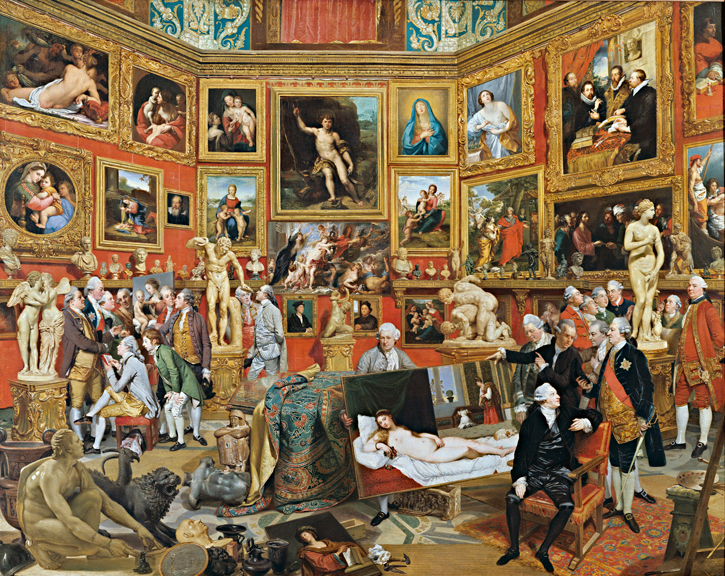
The friendship and patronage of Charles Townley was both welcome and much needed, and the painter put a tremendous amount of time and effort into his portrait of the collector, his collection and his friends.
An open book in his lap, Townley sits in a red baroque armchair, his back to a wall of Roman portrait busts, facing his favourite sculpture, of the water-nymph Clytie, which is on the table in the middle of the room. (Townley, who never married, was in the habit of calling Clytie 'my wife'.)
In the foreground stands a Roman copy of the famous ancient Greek statue of a discus thrower, among a plethora of other sculptures including an animated Bacchic reveller, a bust of Homer and a nymph half-heartedly resisting the embrace of a satyr.
At the back of the room, Townley's friends Sir Thomas Astle and Mr Charles Greville are shown in mid-conversation, while at the very centre of the space we find Pierre-Francois Hugues, the self-styled 'Baron d'Hancarville', who stares intently at Townley as if about to respond to something the collector has said.
D'Hancarville was an adventurer of a type not uncommon in the late eighteenth century. A self-taught expert on the art and mythology of the classical past, he had impressed the founding father of Neoclassical taste, Johann Joachim Winckelmann, with his theories about the ancient world and then gone on to write the catalogue to Sir William Hamilton's celebrated collection of Greek vases.
But he had also bankrupted himself with a crackpot scheme to import fresh fish to Tuscany; and had risked imprisonment by publishing two nakedly pornographic texts, thinly disguised as works of classical history, namely The Private Lives of the Twelve Caesars and The Secret Cult of Roman Women.
Despite this chequered past, Charles Townley was so impressed by 'le Baron' that he became his principal patron and acolyte, giving him a generous annuity so that he might continue to develop his unusual views. Chief among those was the idea that the phallic cults of antiquity contained the key to a lost mystic theology, once shared by peoples from Greece to Persia and as far afield as Japan.
Working with little in the way of evidence but a great deal of imagination, d'Hancarville argued that the supposed guardians of that ancient flame had equated the chain of creation itself with the sexual urge – and then went on to propose that the eroticism of Greek and Roman sculpture should not be frowned at for its indecency but admired, instead, as an echo of that primordial reverence for the universal life force.
Such ideas, which might seem eccentric now but gained considerable traction in the Romantic period, would appear to have worked themselves subversively into Zoffany's portrait. Despite the painter's need for Townley's patronage, he may not have been able to resist having a little fun with him, hoping that it would go unnoticed.
The top-lit space occupied by the collector and his friends does not look like a repository for sculpture, where the art of the past can be safely confined within the taxonomies of art historical discipline; it looks like a room of dream or nightmare invaded by creatures made of stone, who appear to be on the verge of coming back to life. An attempt is being made to catalogue the objects, but the objects themselves seem out of control.
This library, which contains so few books and so many bodies, writhing and posing and touching, might be an allegory of the Augustan mind overwhelmed by its passion for a dangerous pagan world.
Andrew Graham-Dixon, art historian and broadcaster
The free exhibition 'London: An Artistic Crossroads' is on display at Sotheby's New Bond Street Galleries from 25th May to 5th July 2024
You can download the free exhibition tour within Art UK's guide on Bloomberg Connects
